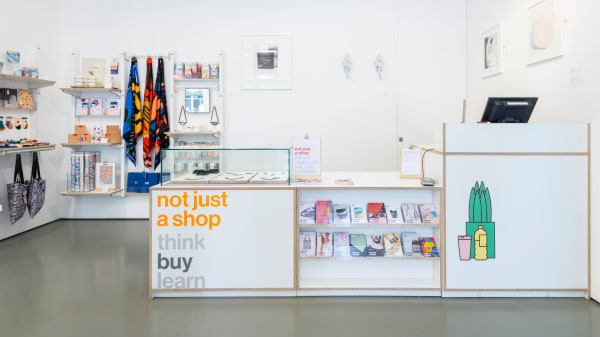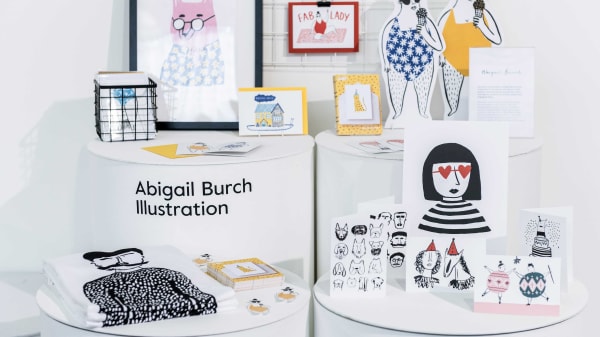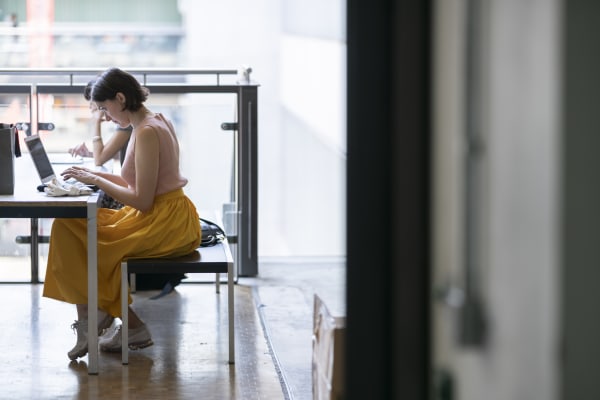Exhibitions and trade shows

Exhibitions and trade shows are useful ways to showcase your work. Taking part can be expensive, so its important to do your research on whether it’s the right show for you, with the right customers and at the right time for your business.
Make the most of exhibitions
- Decide on your aims and try to achieve them (for example sell 5 paintings, collect 100 contacts for your mailing list).
- Calculate your prices to ensure you make a profit (wholesale and retail prices).
- Work out your lead times so you can give customers realistic timeframes for delivery.
- Make the most of your display. Plan the design of your stand and make sure you have all materials needed for set-up.
- Ensure your work is clearly labelled and your contact details are visible.
- Have printed materials (for example business cards, postcards, brochures) for people to take away and provide a way for people to sign up to your mailing list.
- Engage with visitors; talk about your work and ask them questions.
Setting up your own exhibition
Organising your own exhibition can provide you with valuable networking, organisation and budgeting experience.
Tips for organising your own exhibition:
- Agree on the hire fee before you commit to a venue and be aware of additional costs (for example electricity, security, staffing).
- Draw up a project budget and try to stick to it. Include everything (for example lighting, plinths, transport, printed materials and your time) and add on a 10% contingency.
- Make sure you have public liability insurance for the whole exhibition. You may also want to get insurance for damage, loss or theft of work.
- Create an exhibition price list/catalogue with contact details for each exhibitor and photos and prices for works.
Promoting your exhibition
- Email invitations to your contacts and send personalised invitations to anyone you’d really like to attend the private view.
- Post your exhibition on listings websites (for example Arts Council and Time Out).
- Write a press release and send it to relevant journalists a few weeks before the exhibition opens.
- Share photos and updates via your social media channels before and during the exhibition.
- Take flyers/posters to relevant venues before the exhibition opens and hand them out in the local area when the show opens.
- Make sure everyone involved (for example other exhibitors and the venue) promotes the exhibition via their mailing lists and social media accounts.
Working with commercial galleries
Commercial galleries look after the marketing, promotion and sales of your work and take a commission for this service. In most cases the gallery will only need you to be at the exhibition for the private view.
Do not undercut the gallery by selling work exhibited there directly to the buyer. This may harm your relationship with the gallery and undermine your prospects of working with them in the future.
Trade shows and fairs
Trade shows help you to reach lots of potential customers and retail buyers from a particular sector.
There are usually two types of stands for hire at trade shows; 'shell scheme' comes with walls at the back and sides of the stand whereas ‘space only' requires you to build your own walls and often costs more.
Choosing a trade show:
- Research different shows and visit any that you are interested in before you apply for a stand.
- Check if there is a dedicated area for up-and-coming exhibitors as some shows offer discounts for students or people in their first five years of business.
- Stand rates are often calculated by how many square metres you will use, so work out how much space you actually need.
- Find out what’s included in your space, whether you need to bring items like tables and chairs and how you will brand it.
Tips for exhibiting at trade shows:
- Keep up-to-date with trends in your industry as trade buyers will be looking for products that are on-trend.
- Design your stand in advance to ensure that your display is eye catching and professional looking.
- Setting up usually takes place two to three days before the show. Work out the logistics including transporting your work.
- Get your printed materials (for example business cards, brochures, order sheets, price lists) professionally printed – and make sure you give them out!
- Be prepared to take orders from your stand; calculate your wholesale and retail prices and your lead times in advance.
- Make sure your website looks good and includes your current work and contact details.
- Decide how you will take orders and/or payments from your stand.
- Fulfil any orders quickly as this will help maintain your professional image.
- Think about how you will protect your intellectual property (IP).
- Follow up on all the contacts you have made, sending individual emails if possible.
If you are considering organising your own exhibition Artquest has lots of useful resources on acquiring exhibition spaces and funding.
Find out about using empty shop spaces for temporary exhibitions on Artquest.
Resources
- Read our advice on How to Cost and Price your Work (PDF 435KB)
- UKTI provides grants to help businesses attend selected overseas trade shows.
- Anti Copying in Design (ACID) is the UK’s leading membership organisation for design intellectual property.
- Visit Artquest for advice on exhibiting as a visual artist.
Related content
-

Photo by Damian Griffiths
Apply to sell your work in not just a shop
If you're a student or graduate from UAL you can apply to sell your work in not just a shop through our open calls.
-

Abigail Burch's stand at Pulse 2018. Photo by Damian Griffiths
How to get paid
Get advice on pricing, invoicing and selling your work as a designer, maker or artist.
-

Image curtesy of UAL
How to write a press release
Read our guidance on how to write an effective press release.
-

Photo of designer Michelle Njeri Small talking to buyers at Top Drawer 2019.
Top Drawer design trade show
Top Drawer is the UK’s leading design-led trade show for gift and interior products, with over 30 years of experience.